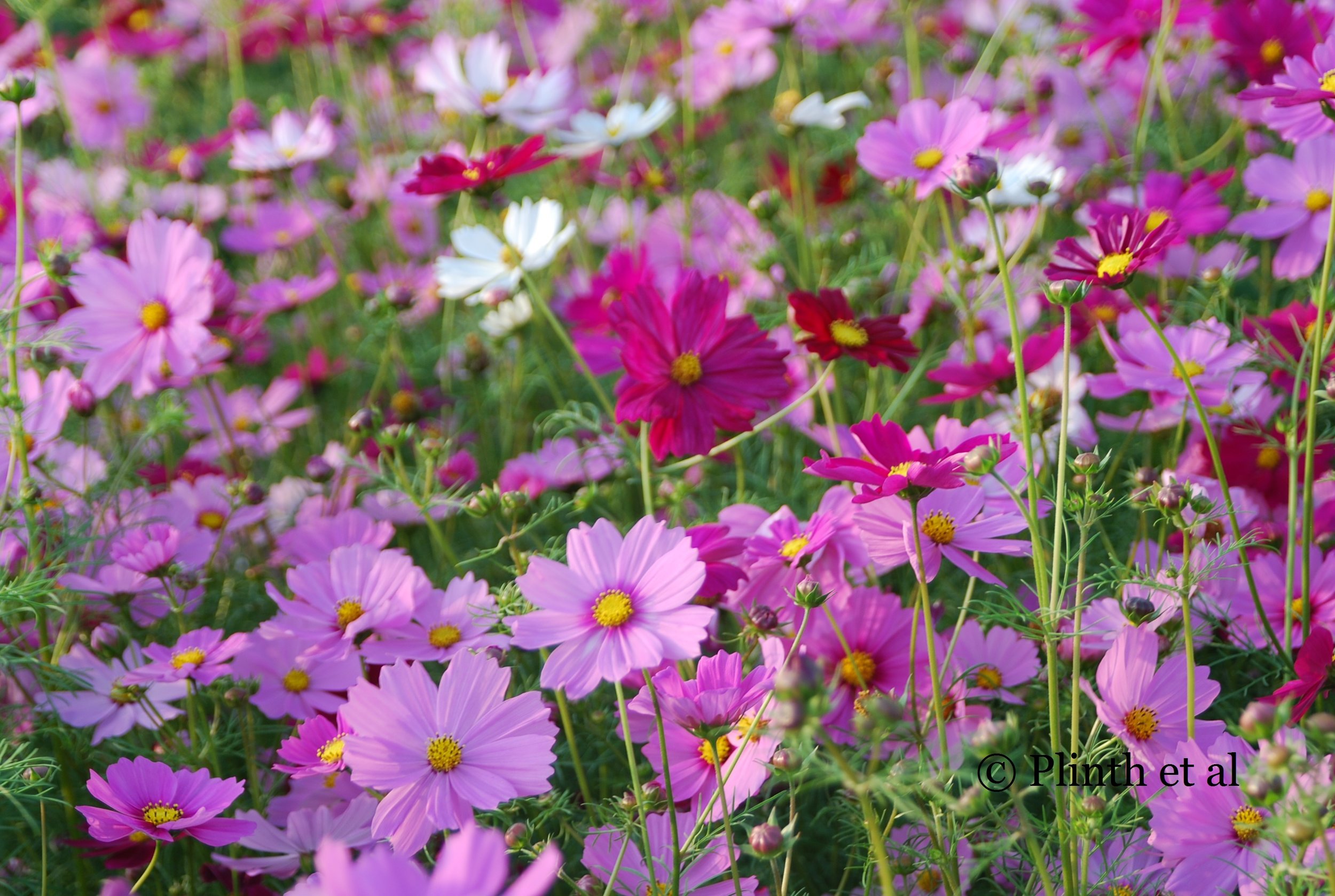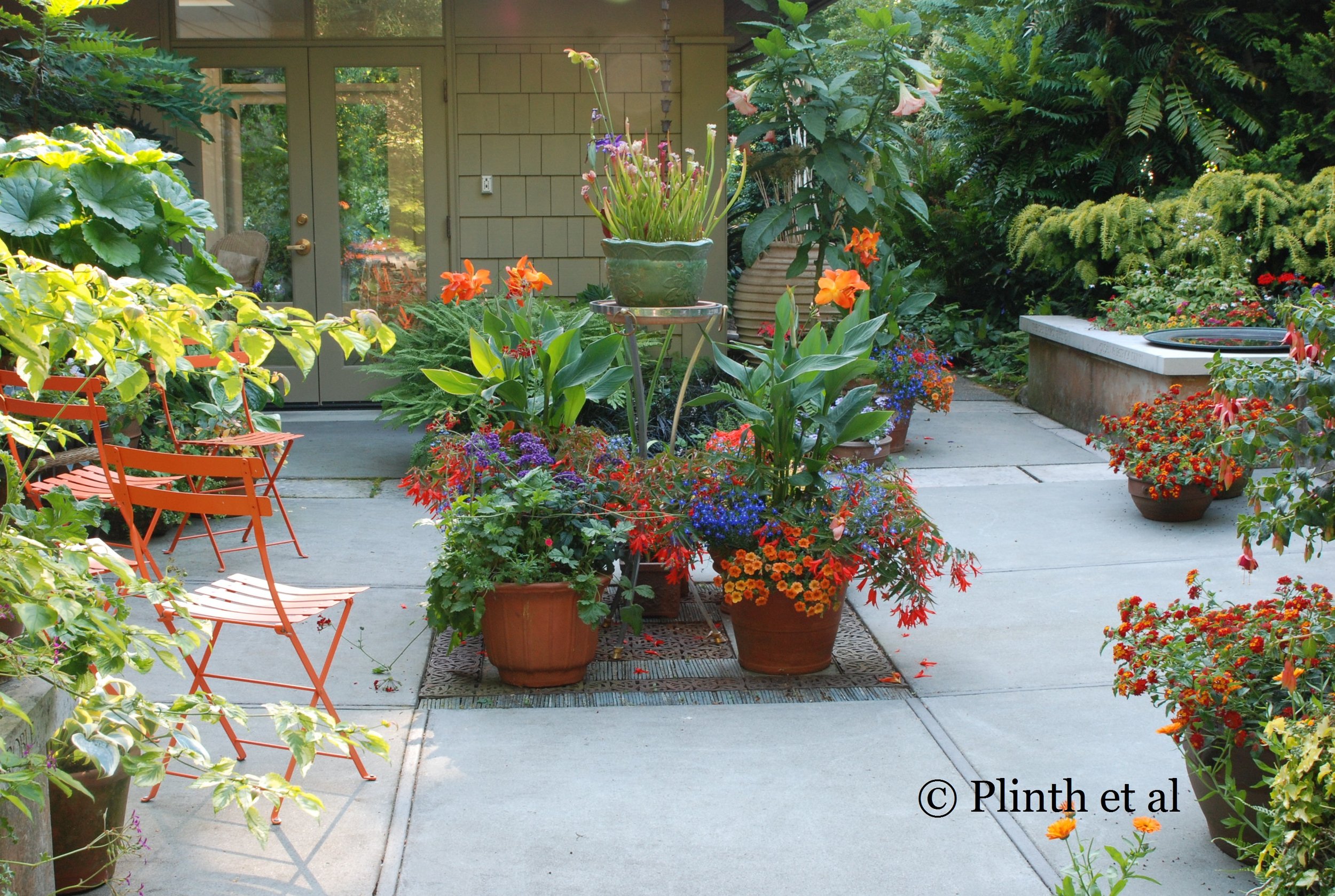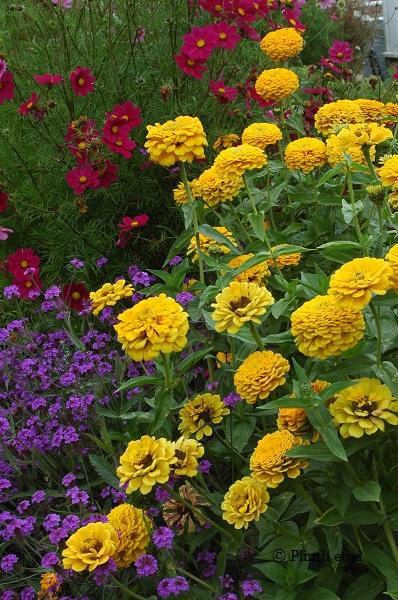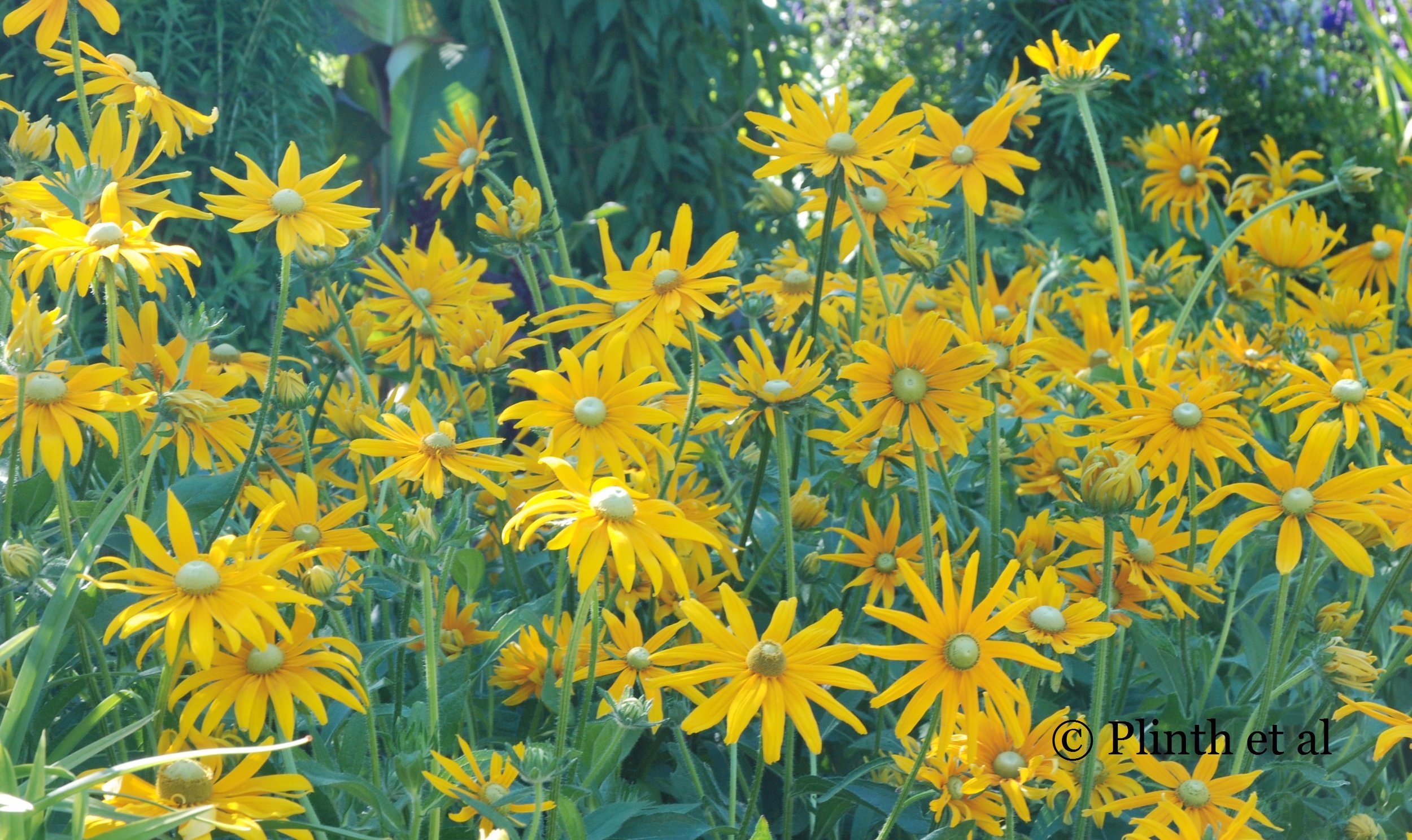Annuals for Late Summer
If perennials are steady gatekeepers who modulate conversations and table settings, then annuals are the effervescent guests that bring much gaiety and laughter to the scene. Annuals can be boisterous gatecrashers. The gardener might be forgiven for overlooking annuals during spring and early summer as spring bulbs and perennials like delphiniums, Oriental poppies, and peonies are at their colorful best. However, as soon as midsummer heat sets in, the floral momentum is gone. It is one reason for the one-season wonder in spring when most people purchase plants. "My garden looks great in April and May for two weeks," my neighbor lamented, "then it looks boring for the rest of the year".
Annuals too suffer from unjustifiable bias since dwarf versions churned out like disposable plastics are sold inexpensively at big-box stores. Granted that live plants are better than artificial ones, the big-box stores has done a disservice to their customers who may be oblivious of annuals being more than impatiens and marigolds. While the impatiens downy mildew halted the ubiquity of Impatiens walleriana hybrids across North America, I secretly rejoiced at the prospect of people broadening their use of other interesting annuals. Impatiens are not to be discounted and as a a child, I loved their Crayola crayon colors in people's gardens. And touching the popping seed capsules was just pure fun.
Late summer is a good time to take good stock of the persistent performers and flagging ones. To be fair, the time may be not kind for those annuals that have lost steam in spring or early summer. However, when the garden is tottering on the verge of exhaustion, relinquishing what energy it can muster for the late season perennials and tropicals, any sight of color from annuals is welcome.
The following three are indispensable and foolhardy in any good garden conditions.
Cosmos bipinnatus
There is something amiss if a late summer garden is missing annual cosmos. Cheerful and chic, Cosmos bipinnatus is easy from seed, and shoots upward into a tower of lacy foliage that soon covers itself nonstop with colorful daisy-like flowers. Then the flowering stems stretch out web-like, weaving themselves among other plants. I find that topping up with later sown seedlings in midsummer prolongs the display when the earlier plants begin to wear out, mildewed and exhausted from their floral marathon. Unless the plants are destined for the cut-flower market, deadheading can be an ever-ending task.
Christopher Lloyd gripes about the failure of Cosmos bipinnatus to flower during long summer days since seed is produced in Kenya where twelve-hour nights are the norm rather than the long day lengths of northern climes. Either the breeders have since meticulously eliminated the plant's day length sensitivity or our hotter summers than those in UK encourage faster growth and better flowering, but I have not encountered problems with my seed-grown plants. 'Purity' is unsurpassed for its clear white color and floriferousness, although frequent deadheading is needed to keep it tidy and free of those unsightly browned flowers, a fate common for white flowers. 'Seashells' has petals fluted like its namesake. 'Versailles Tetra' has rich intense pink flowers on black stems. I like 'Rubenza' for its dark, rich red-rose color verging on garnet.
Nicotianas
Nicotianas are cottage garden mainstays. Nothing can beat Nicotiana sylvestris for its stature, shooting star-like flowers, and evening fragrance. It reliably self-sows as a reminder that its presence can cool the heat that drives us inside air conditioned dwellings. The fat rosettes resemble cabbages, giving a bold anchor for mixed plantings. Some people use it in white gardens with white cosmos, moonflowers, and white heliotrope, although I like it better as a chromatic cleanser among bright colors. Nicotiana mutabilis and Nicotiana langsdorfsii are excellent if you desire an ethereal look since both species have smaller flowers hovering in hundreds. They are see-thru plants that blur the discrete groupings of plants in large borders and happily self-seed (even if their progeny may not be true to type) the following year. Nicotiana 'Limelight' is less generous in self-seeding, but it is worth the trouble of starting anew each year from seed. There are very few annuals (I can only think of Moluccella laevis and Zinnia 'Envy') that possess the chartreuse hue, and 'Limelight' really does shine in the garden, jolting and soothing simultaneously our overstimulated senses from all the colors.
Rudbeckia hirta
I was surprised that the largely perennial Rudbeckia had a few annual representatives, and the once ubiquitous Rudbeckia fulgida var. sullivantii 'Goldstrum' soldiering in fast food chain and hell strip gardens reinforced my prejudice. Rudbeckia hirta inhabits mostly prairies, pastures, and woodland edges from southern Canada into Florida, westwards to New Mexico. Flowers span at least 2-3 inches wide, and may be yellow, yellow marked with dark brown, or entirely maroon. The bristly leaves deter hungry insects, but not butterflies who depend on them for larval food. Given the resurgence of interest in North American prairie plants, it is not surprising to see Rudbeckia hirta earmarked for breeding work. Suddenly various cultivars begin to appear in catalogs and cut flower devotees were using them in farm-to-table bouquets. Then I saw Rudbeckia hirta 'Kelvedon Star' in summer bedding at Great Dixter. 'Cherry Brandy' is a dog among the cultivars - its color is terribly muddled and vigor among the seedlings seems variable even from reputable seed sources. 'Denver Daisy', a selection from Denver Botanic Garden, is a robust grower profuse with its irregularly marooned spotted yellow flowers. It is almost too vigorous to a default that neighboring plants may be overwhelmed. 'Irish Eyes' and 'Prairie Sun' have a softer, wilder look different from the stiffness of 'Denver Daisy'. Their luminous yellows pair well with the blues and purples of autumnal aconitums and asters.












